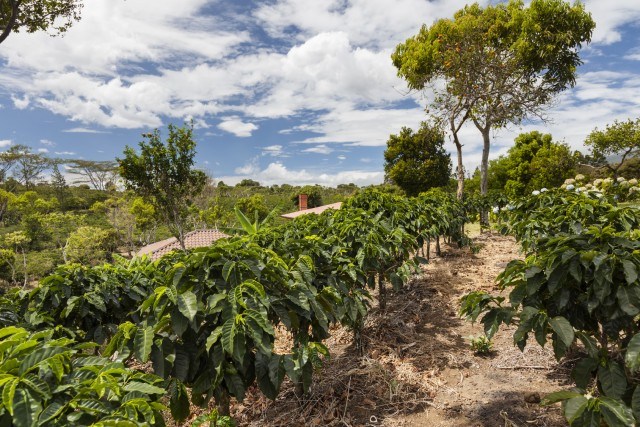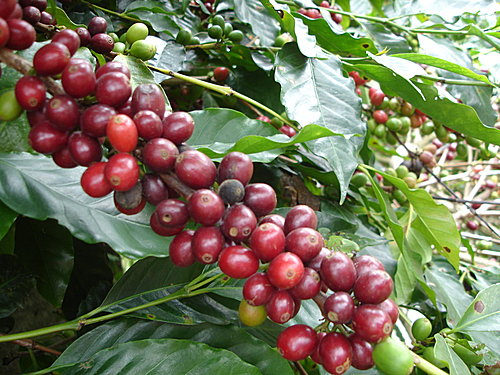Introduction of native species of wild coffee comparison of species and genera of coffee from Liberia, Arabica and Robusta

You know that coffee beans are the kind of fruit that can be extracted from coffee grounds. This is a kind of coffee, it is a part of our life, it was originally a wild species, it was discovered by accident. Today I will introduce coffee that is considered to be a typical wild species.
About wild species
Wild species, these wild ones, which naturally exist in their own fabrics (grey cloth), are plants that have not been improved. Compared with the improved variety, or a poor flower and fruit, and may not become a fruit, but also has an unstable component, is also the charm of the wild species simple figure.
Coffee about wild species
The wild species of coffee is Arabica coffee trees naturally 1000 to 2500 meters above sea level from the western mountains of central Ethiopia. It is said that most of today's cultivated varieties have logs collected in Ethiopia from the 17th to the 18th century as ancestors. A story begins with the legendary discovery of native coffee trees by goats Kaldi and Shake Omar.
A coffee drink
Coffee, which is used as a beverage, has been bred and mutated on the basis of wild species of wood, which is repeatedly bred to improve varieties. For reproduction and variation that exist in nature, but you may need root as a new variety, in the case of culture, in order to select only specific properties, losing the significant characteristics of the original species, it is difficult to produce stable varieties, and research is continuing day by day.
Three kinds of coffee
The coffee currently enjoyed in the world is based on "three primitive coffee" varieties. Here, we will introduce the variety name, origin and function.
Arabica species
Arabica coffee is the first coffee in Ethiopia. There are more than 200 varieties and new varieties are bred through mating. The quality is good, accounting for 80% of the world's coffee. Fragile varieties that can not adapt to high temperature and humidity environment, disease resistance, weak dryness.
Robusta species
The Robusta species is a variety of Congo native to the Congo (Canephora) and coffee was discovered in 1895. Cultivation on the Indonesian island of Java is expanded because of its anti-rust properties. It has the characteristics of resistance to diseases and insect pests and grows rapidly in a hot and humid environment.
Liberian species
The Liberian species is native to West Africa and coffee was discovered in 1876. It grows in a hot and humid environment, but now there is only a small amount of production because of its weak resistance to rust, easy mating and unstable varieties. Most of it is domestic consumption.

Are there any coffee plants growing?
The coffee trees you want to see are getting more and more wild. At present, it can be seen with South Sudan's Boma Plateau, growing wild coffee in Kenya's Massabit Mountains. Originally, what is wild land, whether to bring things, do not know, at a glance know that the coffee tree is not managed by the plantation, but it is very valuable.
The coffee tree, because of the original evergreen tree species, due to the very large tree rather than the choice, but we will expect a completely different thing is that the coffee size seen in the plantation, but it is interesting.
Summary of representative wild species of coffee
A typical coffee, which is a wild species is a small grain of coffee of Ethiopian descent. There are wild Ethiopians in the western center of the mountains, and you have the most cultivated species that have been collected between the 18th and 17th centuries, and are said to have an ancestral log current.
At present, there are more than 200 varieties, and new varieties of mating breeding are continuing.
Important Notice :
前街咖啡 FrontStreet Coffee has moved to new addredd:
FrontStreet Coffee Address: 315,Donghua East Road,GuangZhou
Tel:020 38364473
- Prev

Panamanian coffee family Hartmann details the quality of coffee at Hartman Manor.
The exchange of professional baristas please follow the coffee workshop (Wechat official account cafe_style) Hartman Manor is a coffee farm jointly run by the Hartmann family. The founder of the estate is Alois Strasil Hartmann, who came to Boquete District of Panama around 1918 to start his planting business. Hartman Manor now has two coffee farms Ojo de Agua.
- Next

Introduction to the natural sun treatment of coffee beans what are the characteristics of the flavor of natural sun-cured coffee beans
For professional baristas, please follow the coffee workshop (Wechat official account cafe_style). Have you ever seen a coffee shop written in honey treatments such as sun or water washing? This is how to improve coffee beans. Today I will introduce coffee to the sun. Sun treatment is one of the ways to treat raw coffee beans. A picked coffee cherry is a concrete squat called a patio.
Related
- Beginners will see the "Coffee pull flower" guide!
- What is the difference between ice blog purified milk and ordinary milk coffee?
- Why is the Philippines the largest producer of crops in Liberia?
- For coffee extraction, should the fine powder be retained?
- How does extracted espresso fill pressed powder? How much strength does it take to press the powder?
- How to make jasmine cold extract coffee? Is the jasmine + latte good?
- Will this little toy really make the coffee taste better? How does Lily Drip affect coffee extraction?
- Will the action of slapping the filter cup also affect coffee extraction?
- What's the difference between powder-to-water ratio and powder-to-liquid ratio?
- What is the Ethiopian local species? What does it have to do with Heirloom native species?

